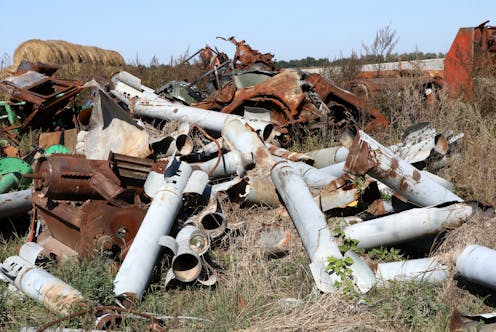To reduce rhino poaching, take demand for horns seriously
 Rhinoceros, with horn still firmly attached.Efraimstochter
Rhinoceros, with horn still firmly attached.EfraimstochterPoaching rhinos for their horns is one of the most publicized conservation issues worldwide. From global trade bans and surveillance drones, to the involvement of celebrities such as British royal Prince Charles and NBA star Yao Ming, it seems no effort has been spared to win the so-called “rhino wars.” Yet, 2014 was another record-breaking year for rhinoceros poaching, with 1,020 animals killed so far, just in South Africa, where most of the world’s 29,000 rhinos live. What are we missing?
Talking about the rhino horn trade most often means talking about poachers, rangers, surveillance and tracking technology, and prison sentences. The fact that recent investment in enforcement hasn’t reduced poaching is commonly seen as a sign that further enforcement is needed. The discussion tends to focus around market supply, and neglect the key role of demand in fueling this illegal trade. Yet, demand from Asian markets driven by the perceived – but nonexistent – medicinal properties of rhino horn shows no signs of slowing down.
 A giant poster in Hanoi encouraging passersby to stop using rhino horn in September, 2014.Nguyen Huy Kham/Reuters
A giant poster in Hanoi encouraging passersby to stop using rhino horn in September, 2014.Nguyen Huy Kham/Reuters
An unsuspecting member of the public might think this neglect is the result of the successes conservationists have achieved on the matter. After all, the popular press often echoes claims of fantastic achievements, such as the recent announcement by Humane Society International that an education campaign had reduced rhino horn demand in Vietnam by 38%. A rigorous look at the available evidence is necessary to see how well conservation efforts reduce demand for rhino horn.
Faulty or nonexistent evaluation
Most demand reduction campaigns simply do not evaluate their impact at all. It’s just assumed the campaign’s objectives were achieved. When any evidence is presented, it can seem anecdotal and cherry-picked to support the assumption that the campaign was successful. Findings are rarely published in the more rigorous scientific literature and organizations seldom make the details of their campaign implementation or evaluation openly available.
Naturally, this lack of evaluation ensures that any organization can have a perfect track record. But it also means that no proof exists that these efforts made a difference. Learning from past mistakes is impossible.
The few campaigns that are evaluated often measure their impacts using flawed methods. One common mistake is the now widely discredited expectation that changes in knowledge or attitudes automatically lead to changes in behavior. Likewise, campaigns often use small numbers of survey respondents to evaluate their impact, hoping afterward to extrapolate the results to a much wider population. This should only be done if these two groups are similar enough, an assumption that is rarely, if ever, tested.
Conservationists are increasingly aware of these weaknesses and some are starting to question the status quo, as seen in recent reaction to the Humane Society’s announcement.
 A stockpile of rhino horns burns.Dvur Kralove/Reuters
A stockpile of rhino horns burns.Dvur Kralove/Reuters
Adapting lessons from other fields
So what is the way forward? Social scientists have for a long time worked on how to determine cause and effect. There are standards in fields such as public policy and health for how efforts to change behavior should be evaluated. Key lessons include:
A credible comparison group must be included in every evaluation study. This control group must not be influenced by the campaign but be expected to respond similarly if targeted. Unrelated factors, such as a new law or other conservation efforts, can skew a comparison using indicators measured before and after a campaign.
More robust experimental designs must be used, such as randomized control trials, where the groups to be targeted in a campaign and used as comparison are chosen randomly. Currently, the groups targeted are often chosen based on having characteristics that make them more likely to respond to the campaign, such as previous interest in wildlife conservation. This makes it impossible to have a fair comparison and untangle the campaign’s effect from the characteristics of the target group.
Researchers must not look solely for evidence a campaign has been successful, but rather test all credible explanations for the results obtained. This can be achieved not only through a robust experimental design but also by using multiple independent data sources such as market surveys, police records on confiscated shipments and increasingly social media and other online sources.
 The carcass of a rhino killed for its horn by poachers in South Africa.Reuters Staff
The carcass of a rhino killed for its horn by poachers in South Africa.Reuters Staff
With funding for conservation becoming more competitive, donors are increasingly demanding evidence that their money does make a difference on the ground. Yet, conservationists continue to be less rigorous when researching the human side of conservation than when investigating our animal and plant counterparts.
Why is rhino poaching still rampant? The lack of robust demand reduction campaigns may well be the answer. Changing behavior is possible and evaluating our efforts is a crucial step in understanding how to make a difference.
Diogo Veríssimo does not work for, consult to, own shares in or receive funding from any company or organisation that would benefit from this article, and has no relevant affiliations.
Read more http://theconversation.com/to-reduce-rhino-poaching-take-demand-for-horns-seriously-34265














